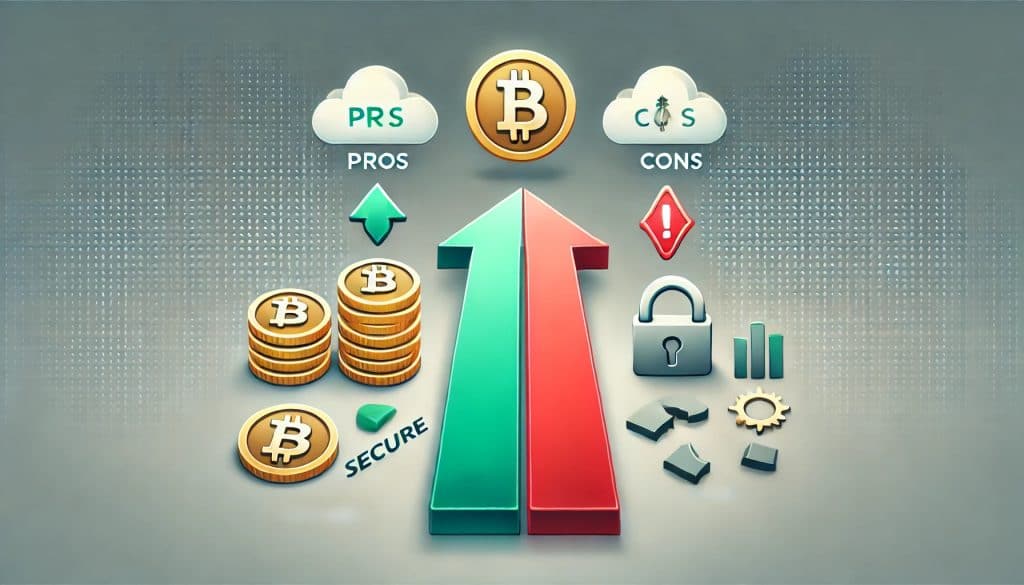
Introduction
The Bitcoin market remains a focal point for investors around the world, and 2024 is no exception. With a history of volatile fluctuations and impressive growth rates, it’s important to understand the current and future landscape in order to make informed investment decisions. This Bitcoin Review 2024 aims to provide an in-depth analysis of current market trends, forecasts, and expert opinions, highlighting important factors that could affect Bitcoin’s trajectory this year.
Overview
The cryptocurrency market has been on a roller coaster ride, and Bitcoin, the leading digital currency, is no stranger to volatility. In this Bitcoin Review 2024, we examine the many factors shaping the Bitcoin market, including regulatory changes, technological advancements, and macroeconomic trends. In this review, we’ll cover Bitcoin price forecasts, market performance, and expert analysis from reputable sources such as Forbes, Bloomberg, CNBC, and more. To provide you with a comprehensive Bitcoin review 2024, we’ll look at key characteristics of Bitcoin, including its market capitalization, trading volume, and adoption rate.
Pros and cons

Pros:
- Market dominance: Bitcoin is still the most dominant cryptocurrency, with a significant share of market capitalization.
- Institutional adoption: Increased institutional investment, with major corporations and financial institutions showing interest in Bitcoin.
- Technological advancements: The continuous improvement of blockchain technology and the security of Bitcoin’s network.
- Scarcity and demand: Bitcoin’s limited supply creates scarcity, which drives demand and price.
Cons:
- Volatility: The price of Bitcoin is volatile, which can result in significant financial losses.
- Regulatory uncertainty: Ongoing regulatory scrutiny and potential legal changes could impact the Bitcoin market.
- Security concerns: Despite advances, Bitcoin is still vulnerable to hacking and fraud.
- Environmental impact: The energy consumption associated with Bitcoin mining creates environmental concerns.
Bitcoin is the dominant player in the cryptocurrency market, driven by ongoing technological advancements and increased institutional adoption that enhance network security. The limited supply of 21 million coins creates scarcity and demand, which contributes to price appreciation. However, Bitcoin’s high volatility poses the risk of significant financial loss, and ongoing regulatory scrutiny and potential legal changes add to the uncertainty. Despite improvements, Bitcoin is still vulnerable to security threats such as hacking and fraud, and its significant energy consumption creates environmental concerns.
Deep dive analytics

Market performance
Bitcoin’s performance in 2024 was influenced by a number of key events. After a turbulent start, Bitcoin showed resilience, rebounding from significant declines. According to Forbes, the cryptocurrency saw a steady increase in institutional investment, boosting market confidence.
Skill development
Advances in blockchain technology have played a crucial role in the evolution of Bitcoin. The introduction of the Lightning Network has made Bitcoin more accessible for everyday use by speeding up transactions and lowering fees, while advances in quantum computing pose both opportunities and challenges for the future security of Bitcoin.
Regulatory environment
The regulatory landscape for Bitcoin continues to evolve. Bloomberg highlights that regulators around the world are creating frameworks to integrate cryptocurrencies into the financial system while ensuring consumer protection. These regulations could have a significant impact on Bitcoin’s market dynamics.
Adoption and use cases
Bitcoin adoption is expanding beyond just investment. More and more businesses are accepting Bitcoin as a payment method, and the use of Bitcoin in cross-border transactions is also on the rise. This increased utility is expected to bring further adoption and stability to the market.
Compare
When comparing Bitcoin to other cryptocurrencies like Ethereum and Litecoin, a few differences stand out. Bitcoin’s market capitalization far exceeds its peers, emphasizing its dominance. However, Litecoin boasts faster transaction times, while Ethereum offers more versatility with its smart contract capabilities. These differences make each cryptocurrency suitable for different investment strategies and use cases.
Bitcoin vs. other cryptocurrencies
| Features | Bitcoin | Ethereum | Litecoin |
|---|---|---|---|
| Market capitalization | The highest | Second highest | Moderate. |
| Transaction speed | Moderate. | Westbound | Quick |
| Technical features | The default | Advanced smart contracts | The default |
| Adoption rate | high | high | Moderate. |
| Security. | Berry High | high | high |
The table compares Bitcoin, Ethereum, and Litecoin, highlighting key differences such as market capitalization, transaction speed, technical features, adoption, and security. Bitcoin boasts the highest market capitalization and extremely high security levels, making it the top choice for investors. In contrast, Ethereum has slower transaction speeds but offers advanced smart contract features. Litecoin, known for its faster transaction times, offers a more moderate option for users. This comparison highlights the unique strengths and uses of each cryptocurrency for different investment strategies and user needs.
Conclusion
Overall, the Bitcoin Market Review 2024 presents a promising yet cautious outlook for cryptocurrencies. While Bitcoin continues to lead the market with strong adoption and technological advancements, investors should remain vigilant about inherent risks and regulatory developments. As always, thorough research and strategic planning are essential to navigating the volatile cryptocurrency landscape.
Ranking
4/5 – Bitcoin’s market performance in 2024 shows great potential, but caution is warranted due to high volatility and regulatory uncertainty.
FAQ
What are the main factors affecting the price of Bitcoin in 2024?
Key factors include institutional adoption, regulatory changes, technological advancements, and macroeconomic trends.
How will Bitcoin compare to Ethereum in 2024?
Bitcoin has a higher market capitalization and is considered a store of value, while Ethereum offers more versatility with its smart contract capabilities.
What are the environmental issues associated with Bitcoin mining?
Bitcoin mining consumes significant energy, contributing to environmental concerns about its carbon footprint.
See also
- Browne, R. (2024, June 24). Bitcoin extends drop after one of crypto’s worst weeks of 2024. Bloomberg. https://www.bloomberg.com/news/articles/2024-06-24/bitcoin-btc-extends-drop-after-one-of-crypto-s-worst-weeks-of-2024
- Rooney, K. (2024, July 2). Bitcoin to hit new all-time high this year if history plays out, report says. CNBC. https://www.cnbc.com/2024/07/02/bitcoin-to-hit-new-all-time-high-this-year-if-history-plays-out-report.html
- Forbes Advisor. (2024). Crypto market outlook forecast. Forbes. Retrieved from https://www.forbes.com/advisor/investing/cryptocurrency/crypto-market-outlook-forecast/
- Forbes Advisor. (2024). Bitcoin price prediction 2024. Forbes. Retrieved from https://www.forbes.com/advisor/investing/cryptocurrency/bitcoin-price-prediction-2024/
- Nasdaq. (2024). Crypto market update Q2 2024 review. Nasdaq. Retrieved from https://www.nasdaq.com/articles/crypto-market-update-q2-2024-review
- Investopedia. (2024). Cryptocurrency. Investopedia. https://www.investopedia.com/terms/c/cryptocurrency.asp
